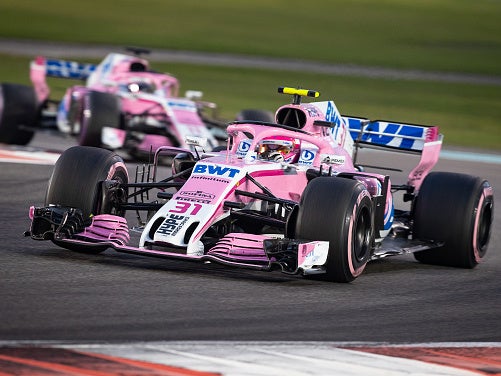Formula One gender pay gap revealed to be above UK average at all but one British team
Exclusive: One of the biggest gulfs in pay was at Williams in Oxfordshire where the average hourly wage for women was 25% lower than that of their male colleagues
Your support helps us to tell the story
From reproductive rights to climate change to Big Tech, The Independent is on the ground when the story is developing. Whether it's investigating the financials of Elon Musk's pro-Trump PAC or producing our latest documentary, 'The A Word', which shines a light on the American women fighting for reproductive rights, we know how important it is to parse out the facts from the messaging.
At such a critical moment in US history, we need reporters on the ground. Your donation allows us to keep sending journalists to speak to both sides of the story.
The Independent is trusted by Americans across the entire political spectrum. And unlike many other quality news outlets, we choose not to lock Americans out of our reporting and analysis with paywalls. We believe quality journalism should be available to everyone, paid for by those who can afford it.
Your support makes all the difference.Formula One’s reputation as a male-dominated sport has been cemented in recently-released filings which reveal that all of the teams based in Britain paid their male staff more than women last year.
It comes despite accelerating efforts to boost the appeal of motorsport to women. Campaign group Dare To Be Different was launched in 2016 to drive diversity in motorsport and next month the all-female W Series will host its first race. In contrast, F1 doesn’t have a female driver and women lose out lower down its rankings as well.
Six of its ten teams are based in Britain and employ a combined 4,023 staff. The gulf in pay between men and women was higher than the national average at all but one of them last year. The best performer was Northamptonshire-based Force India which went into administration in July and was rescued by Canadian billionaire Lawrence Stroll, a former investor in fashion brand Tommy Hilfiger.
Force India is one of F1’s smallest teams with 382 employees according to its latest accounts. Last year it paid women an hourly wage which was 12.6% lower than the amount earned by men. It is an improvement on the national gender pay gap of 18% which every other British F1 team failed to meet.
Their annual filings were made under the Equality Act which came into force last year and requires companies with more than 250 employees to disclose the gender pay gap between men and women.
One of the biggest gulfs in pay was at Williams in Oxfordshire where the average hourly wage for women was 25% lower than that of their male colleagues. It is particularly ironic as Williams employs the highest-ranking female team executive in F1. Its deputy boss is Claire Williams, daughter of the team’s controlling shareholder Sir Frank Williams, but she is in the minority.
According to the team, just 17.6% of its workforce was female last year, up from 13.3% in 2017. “At the current rate of change, it will be many years before we, as a business, as an industry and as a society, reach a point of equality,” says Claire Williams. “With this in mind, Williams will continue to promote more women in the workplace and support their progression within our business, as these steps are key to any sustainable and successful organisation.” The hurdle is education.
One of the biggest departments for any F1 team is engineering but, according to Williams, just 10.5% of its engineers were female last year. Turning this around could be an uphill struggle.

Filings from F1’s parent company, which is owned by Liberty Media, state that “the motorsport industry remains predominantly male, largely because of the lack of women choosing to pursue careers in science, technology and engineering.” Testimony to this, research last year from campaign group WISE showed that only 15% of total engineering and technology graduates in Britain were women.
In a bid to turn this around, F1’s educational programme, F1 In Schools, launched a marketing campaign targeting girls last year and, as a result, 40% of all participants in the competition were female
Since Liberty bought F1 in 2017 it has driven up the sport’s headcount and its filings reveal that last year there was a surge in the number of women in executive positions. They state that “our legal team now comprises of 74% women and the financial department also recruited more women into senior roles with a 50/50 split, and 40% of those women being at a senior level.”
Women were paid 81p for every £1 that men earned last year giving them an hourly wage which was 18.8% lower than the male staff. It is close to the national average but F1 isn’t satisfied. The filings add that “closing the gender pay gap remains a top priority for the F1 leadership team. Addressing this issue will take time but we are in no doubt that the steps we are taking to improve female representation in our business will have a positive impact in the long-term.”

Join our commenting forum
Join thought-provoking conversations, follow other Independent readers and see their replies
Comments